Whether it’s exotic adventures, spiritual
nourishment or stunning scenery and wildlife, the Indian subcontinent has an
experience to thrill everyone.
India is on the boil. There is no other
country that offers the diversity, the complexity, the weirdness and human
drama as India. Not least among its virtues is the balm of spirituality, not
always evident on the surface of daily life, but real just the same.
In 2013, travelers will find India easier
to visit than ever before. The choice of hotels has expanded, domestic airlines
offer low prices and good services, and international air connections improve
each year. Here are some good reasons to plan a trip.
Spectacle
A filigree of green valleys cradled between
the peaks in the Great Himalaya and Karakoram ranges, Ladakh is known as
India’s Little Tibet, and it’s two-day Hemis Festival celebrates the birthday
of Guru Rinpoche, who introduced tantric Buddhism to Tibet. The festival takes
place at Hemis Gompa, the largest and wealthiest of all Ladakh’s monasteries,
and the one whose sequestered position in a serpentine valley protected it from
the marauding armies that swept through Ladakh.
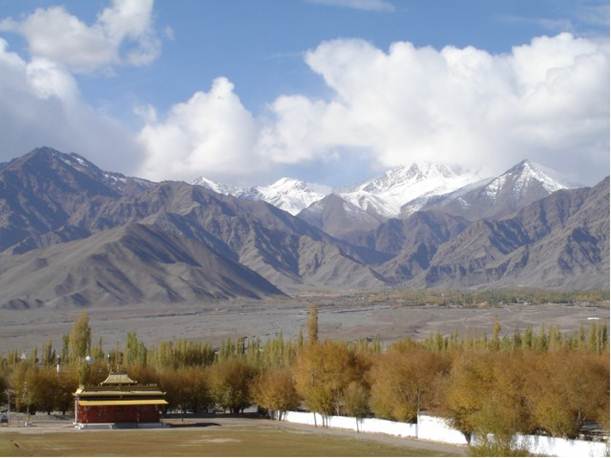
Ladakh
is known as India’s Little Tibet
Over two days in June or July, villagers
and goat-herding nomads from far-flung regions congregate to trade, socialize
and drink fermented barley, while Buddhist lamas perform the stylized masked
dances that form one of the highlights of the Buddhist calendar.
Atmosphere
Close to the pointy end of the Indian
shark’s tooth, Kochi is the largest city in Kerala, and is perpetually in
slumber mode. There are several bits to Kochi but Fort Cochin and its southern
neighbor, Mattancherry, is where you want to be.
Since the time of the Caesars, Fort Cochin
has been a spice port. In its bazaars, Jewish traders rubbed shoulders with
merchants from China and Arabia, each of whom left their mark. Although Fort
Cochin still trades in spices, these days its specialty is collapse. Browsing
goats, rust and creeping mould are as much a part of its architecture as the
giant Chinese fishing nets, the old Jewish quarter and the nightly kathakali
performances. Don’t miss cocktail hour at Brunton Boatyard.
Beach
Goa is India’s hottest beach destination –
more than 100km of sea-swept sand amply furnished with coconut palms, mangoes
and great sunsets. The state first appeared on the modern tourist’s radar in
the late 1960s, when it sprang to prominence as a hippy nirvana.
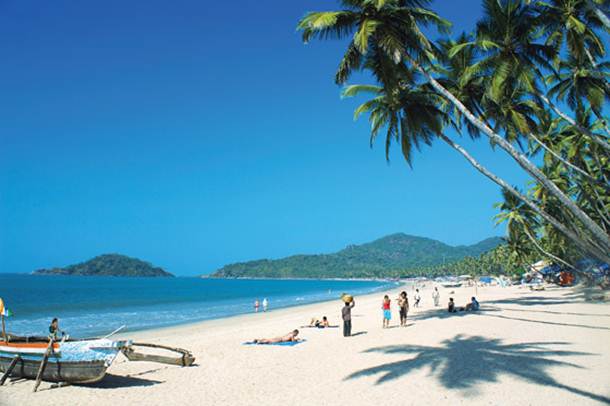
Goa
is India’s hottest beach destination – more than 100km of sea-swept sand amply
furnished with coconut palms, mangoes and great sunsets
Anjuna, once the ground zero of hippiedom,
still has a few dreadlocked veterans, but these days the packaged mass tourists
rub shoulders with minor league jetsetters from Mumbai and Maharashtra, and
swish new cafes, restaurants and nightclubs have sprung up along the busy
Calangute to Baga stretch to cater to their tastes. The countryside is another
story, and a languid, wandering journey along Goa’s sleepy roads is one of the
more sublime experiences of the Indian subcontinent.
Nostalgia
Surveying the Indian hill station of
Darjeeling from its flowery slopes on the flanks of Observatory Hill, the
Windamere Hotel is an absolute hoot, a world of make-believe where the clock
stopped ticking in 1930. Built as a ‘chummery’ – a boarding house for colonial
chaps sent out as tea plantation managers – today Windamere is a hotel full of
enchanting eccentricities.
The hotel is tailor-made for devotees of
the Raj, where the style and tastes of British India are still scrupulously
observed over cucumber sandwiches at afternoon tea, served daily in Daisy’s
Music Room. Located within The Snuggery, the hotel’s library has a substantial
collection devoted to India’s railways. Ask for a room with a wake-up view of
Kanchenjunga, the world’s third tallest mountain.
Romance
Rajasthan, ‘Land of Kings’, is India at its
flamboyant best. If you want an India that fulfills every exotic fantasy – palaces,
warrior kings, camel cities – Rajasthan is the place. For more than a thousand
years the state was ruled by the Rajputs, warrior kings who embraced the
romantic ideals of bravery, etiquette and chivalry. And heroism and tragedy on
a majestic scale has left the landscape splashed with bloody legends and
impressive forts.
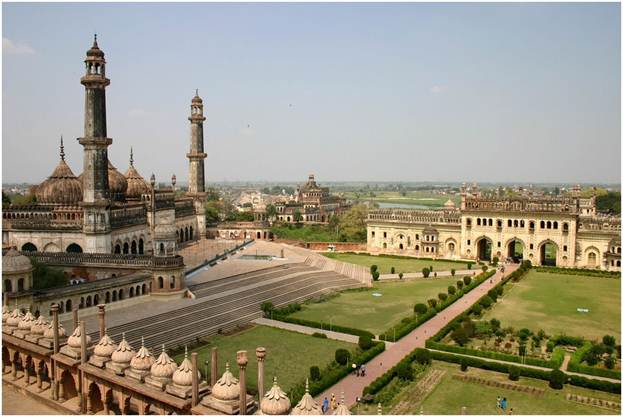
Rajasthan
is the most colorful state of India
Gateway to Rajasthan is the pink city of
Jaipur, but in the process of opening itself up to the wider world the city has
lost some of its colour. Plan a wandering circuit of the state to include
Jodhpur, Bikaner, Ajmer and Chittorgarh, where the women of the city once
committed mass suicide while the men marched out to face certain death at the
hands of a besieging Islamic force.
Monument
The Taj Mahal, the tomb that Mushal emperor
Shah Jahan built for his beloved wife, Mumtaz, is poetry in stone – colossal
yet ethereal.
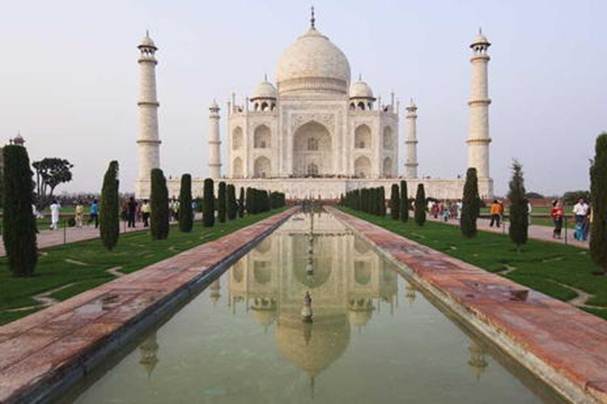
The
Taj Mahal is the jewel of Muslim art in India and one of the universally
admired masterpieces of the world's heritage
My own personal favourite Taj moment
involves a slight diversion. When you get to the main gate, turn right and
follow the wall downhill, passing a small bazaar, until you come to the river.
Instead of the hordes visiting the Taj, you will be the only foreigner. At the
bottom is a boatman who will pole you across to the other side, and while this
modest voyage is likely to cots 200 rupees – probably 10 times what the locals
might pay – the reward is a sublime view of the Taj from the riverbank.
Villagers regularly come down here to bathe, slashing in the water and
fracturing the mirror image of the Taj into a shimmering mosaic.
Float
Stretching across 1500 square kilometres,
the backwaters of Kerala are a lacework of rice paddies and muddy villages
threaded together by canals and rivers that run between corridors of coconut
palms. Drifting through this liquid landscape on a houseboat is one of the staples
of Keralan tourism. All but the most basic houseboat comes with solar-heated
showers and a mosquito net. A one-night journey will give you a taste, but
three nights is better if you want to taste life along the less visited water
ways.
Roar
India has more than half the world’s
tigers, which current estimates put at about 3500, and the place to see them is
Rajasthan’s Ranthambore National Park. The Oberoi Vanyavilas Ranthambore in
consist of 25 luxury tents each set within a walled garden, with teak floors, a
king-size bed, air-con and a freestanding bath in a marble-plated bathroom.
Twice daily game drives provide the essential khaki element.
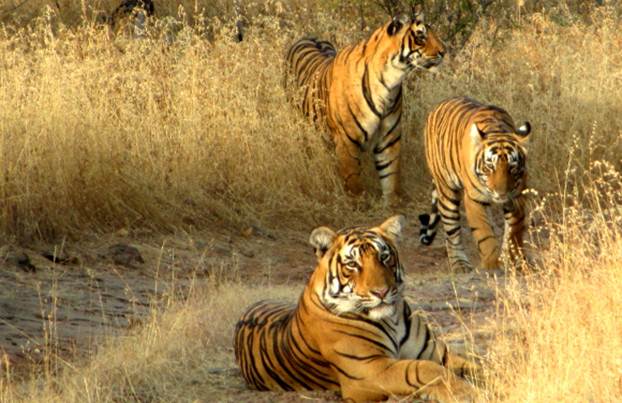
Roar!
Tiger Encounters in Ranthambore, India
Spa-aah
Set on a hilltop high above the Ganger
River and the temples of Rishikesh, Ananda in the Himalayas brings five-star
luxury to the spa retreat. Meditation, yoga, food, spa programs, art, culture
and adventure activities are part of the arsenal that Ananda deploys in its
efforts to rebalance and rejuvenate.
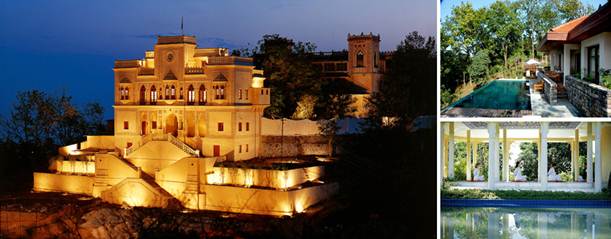
Ananda
Spa Resort India has been rated as the best spa in the whole world
Guests can stay on a room-only basis, but
it’s the packages with meals, spa treatments and therapies included that are
the real reason to be here. A regular contender for the title of ‘world’s best
spa’, Ananda delivers serenity with a silk touch.